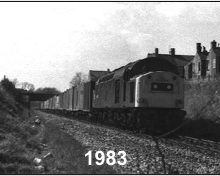
The third factor is the dislocation between those who have to pay the cost of innovation – the rail companies – and those who would benefit – often the shippers. To get over this problem you need a change agent who can enable the change and also get the benefit of that change. In most cases, that is where the government needs to step in.
Goldney then went through some examples of possible innovations that could boost efficiency and the obstacles that would have to be overcome. If the industry tried to introduce remotely driven trains, which would cut out a large chunk of labour costs, there would be objections from trade unions and safety organisations. Increasing train speed up to 125mph or 140mph, up from the current limit of 75mph would require new bogies and a new fleet of locomotives and as well as negotiations with network rail over track use.
“We are in a very conservative business – managing chance is very difficult,” admitted Goldney. From the floor, questions covered whether rail freight could become involved in HS2 and whether increasing the load capacity of trains was more important than improving speed.